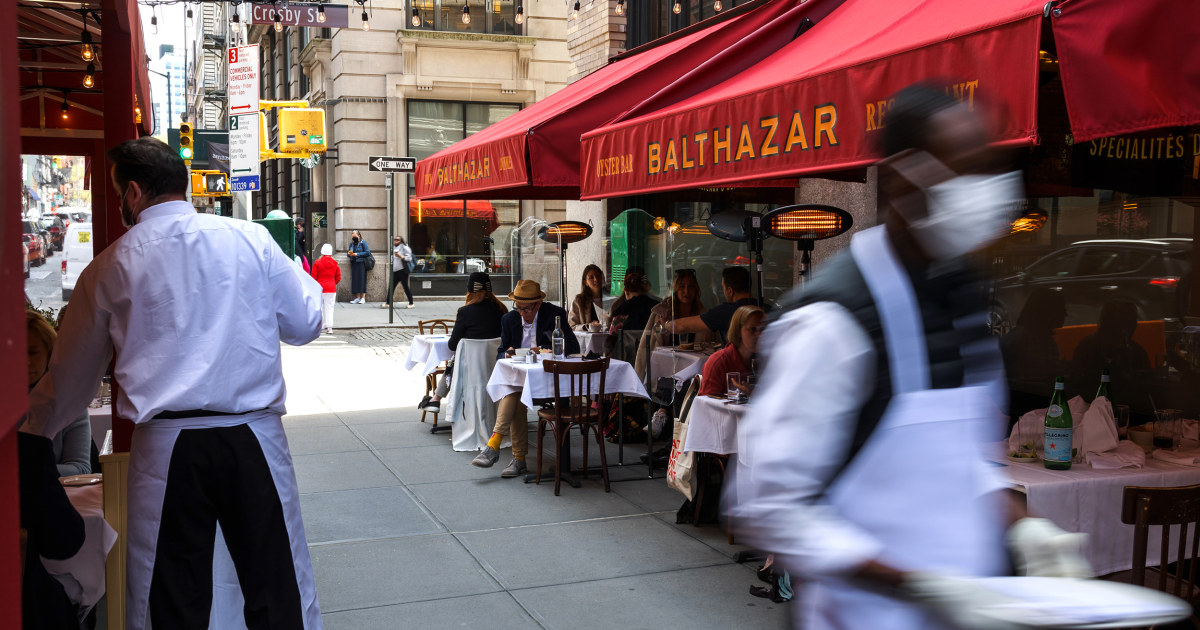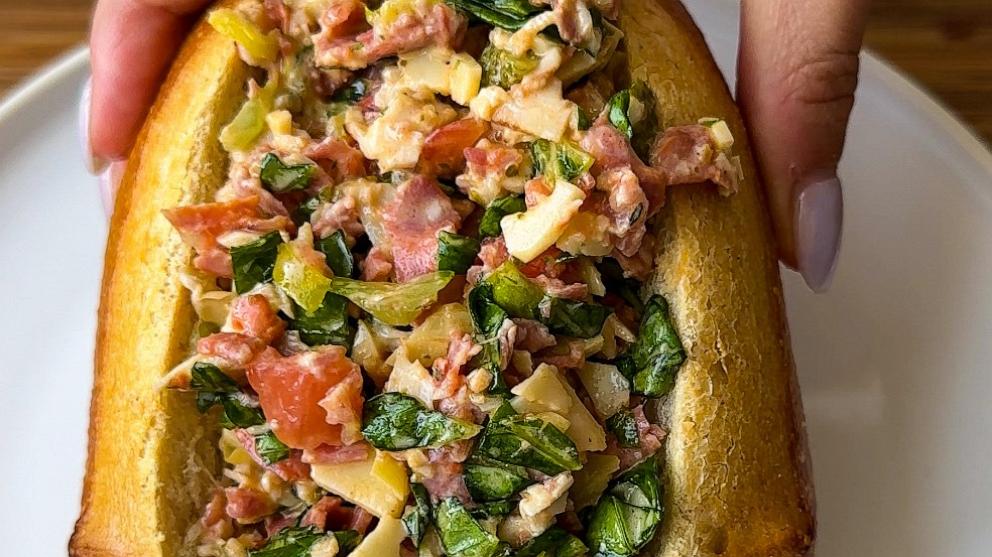The pandemic ushered in a new level of dining, from revamped drive-through options to family packs of comfort food to home-cooked meals. So did it kill off fine dining? Experts say the white tablecloth experience is not dead yet — but it has been forced to evolve.
With the three-martini lunch crowd still on hiatus and international jet-setting gourmands mostly unable to travel, many higher-end establishments have had to reconfigure their offerings. Facing higher costs for everything from lobster to labor, restaurants have pulled back on their hours, stopping lunch service and remaining closed on both Monday and Tuesday.
Some famous names closed for good. Others are in “hibernation.” Many have “pivoted,” investing heavily in open-air and sidewalk dining structures, beefing up their to-go and delivery options, experimenting with pantry-style boxes and offering online cooking classes to bring the experience home.
The pullback on the higher end comes as a pandemic-exhausted nation has plunged whole hog into delivery and drive-through on the lower end. Fast casual king Applebee’s is planning to add more drive-throughs, while Wendy’s and iHOP are eyeing potential “ghost kitchen” concepts for outlets that will be delivery only.
McDonald’s and other fast-food chains are pushing pricier $10-$30 combination meals instead of value meals to capture demand for zero-prep family meals from families sick of cooking at home and watching the dishes pile up.
“Drive-thru, delivery, curbside, and other off-premises options were perceived as safer by customers during the early stages of Covid. We were all eating in our cars. So these channels simply surged to the forefront of consumer preference, and restaurants responded,” said Danny Klein, editorial director of Food News Media, in an email.
To keep lines moving, restaurants added multiple drive-thru lanes, allocated parking spaces for lengthier orders, and installed new technology inside the restaurants, including notifications when guests arrived.
“In the wake of this, quick-service restaurants had an enormous opportunity to serve guests and grab share in places they didn’t, pre-pandemic,’ Klein said. “This is true of casual-dining brands as well. Their digital accessibility welcomed new diners and that adoption gap with delivery was crossed much faster than it would have before Covid. People had no choice but to give delivery or to-go a shot.”
In addition, customers are adding on trips to the same restaurant, choosing to dine in out on Friday but then also getting their favorite meal “to go” on Tuesday.
It’s been a grueling year and a half. Restaurant industry sales fell by $240 billion to $659 billion in 2020, according to the National Restaurant Association, an industry trade group. Over 110,000 locations closed, either temporarily or permanently.
But overall, there’s hope. In foodie cities like New York City, pent-up consumers are starting to fill tables again. New restaurants are opening. Customers are returning, especially to celebrate special events, like reunions, engagements and weddings.
The interconnected “reefs” of the various dining ecosystems and price points were hit by a collective tragedy of the pandemic, said Adam Platt, food critic for New York Magazine.
“A great black tide comes through and some fish scatter, some die, everyone is in trauma, then the tide goes away and now you have rebirth,” Platt said. But now, “life is coming back to the reef.”
He has noticed some slight fall-off in service at some establishments struggling with the loss of seasoned workers. Dishes may take slightly longer to arrive. Wait staff appear somewhat more flustered. Performance isn’t consistent over repeat visits. But they carry on.
“Restaurants are a very resilient, hard-working industrious group of people,” Platt said. “It’s a battle for them in the best of times. Right now it’s a war of attrition.”
Food trends that began before the pandemic have now been accelerated. Required jackets and silver cloches disappeared years ago. French-based culinary excellence has been on the wane. Restaurateurs are trending towards simpler, locally sourced, fresher and plant-based fare — all the more accelerated as sourcing got trickier due to supply chain snarls and meat sourcing and pricing difficulties.
“Consumer demand is at an all-time high,” said Chris Coombs, chef and co-owner of Boston Urban Hospitality. “A lot of social events that were postponed are now coming back.”
He has seen and implemented changes. Party sizes are smaller and business demand is off. Valet service is postponed as guests don’t want strangers in their cars. Guests may be slightly late for reservations due to waiting 20 minutes for an Uber or driving around looking for parking. Diners are more inclined to want to sit outside on nice days. Following a surge in the highly contagious delta variant of the coronavirus, he said many restaurants had seen about a 20 percent falloff.
But the appetite for dining is “robust,” he says. “People want experiences that make them feel good.” And with savings and wage growth, “there’s plenty of liquidity in the marketplace.”
International fine dining has also rebounded, said Andy Hayler, a London-based food critic who has eaten at every three star Michelin restaurant in the world.
“It’s like Christmas every week,” he said of his conversations with U.K.-based restaurateurs. Reservations at top spots are booked solid months in advance. Average spending is higher, with customers splurging on nicer wine and trying the tasting menu instead of just picking dishes à la carte.
“People have had nothing to spend on except Amazon,” Hayler said.











